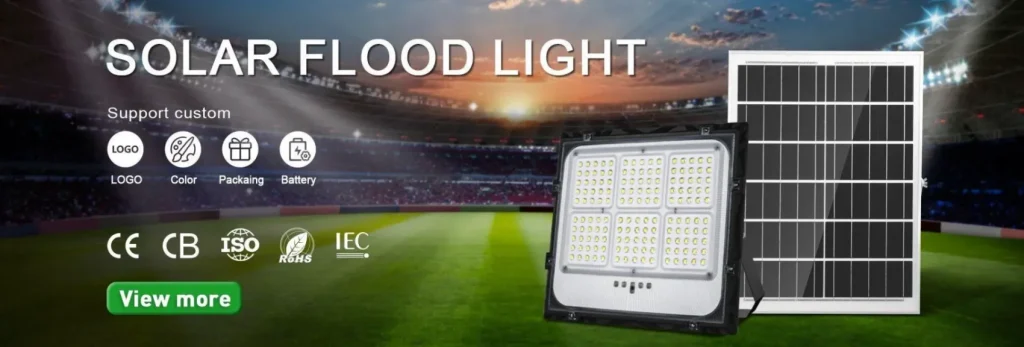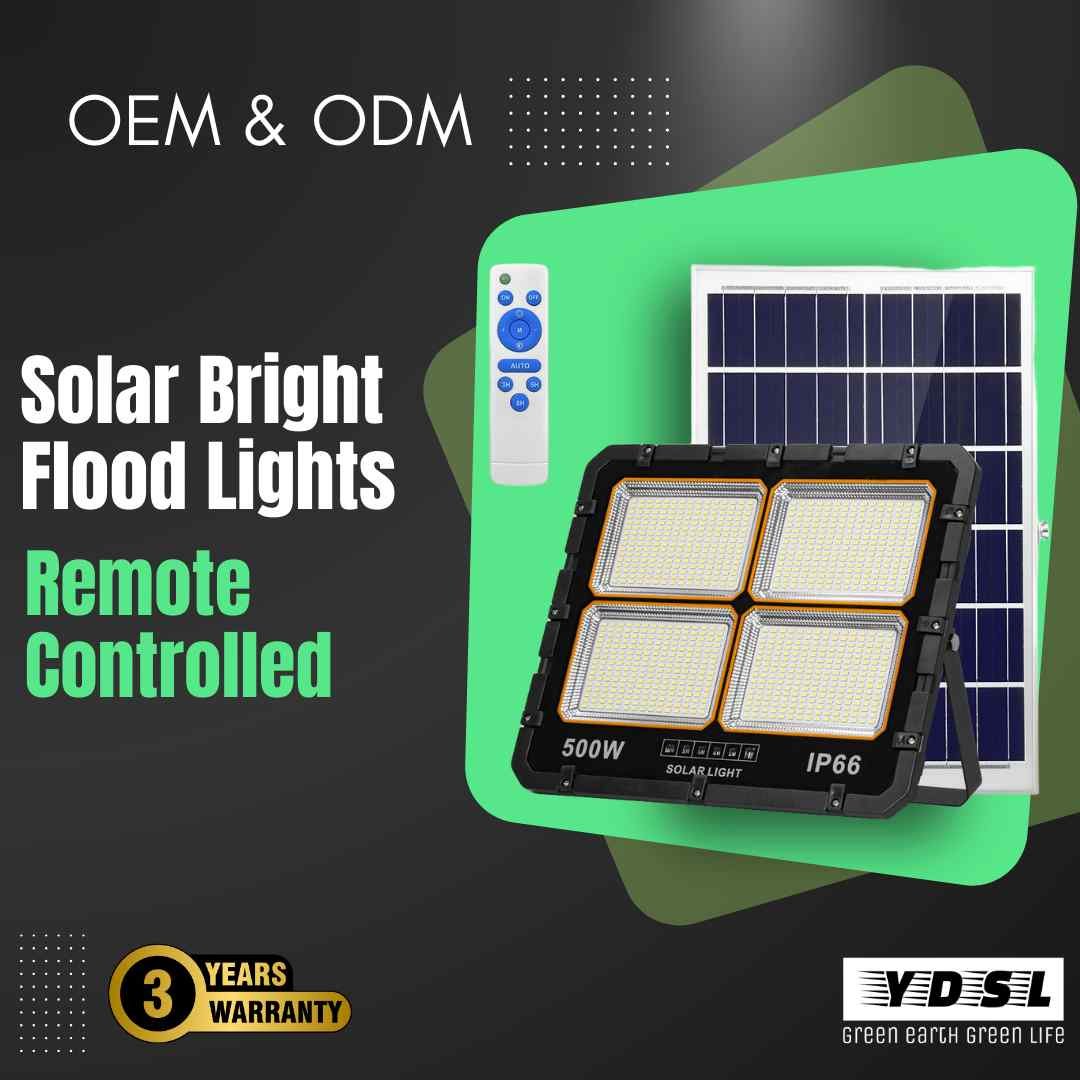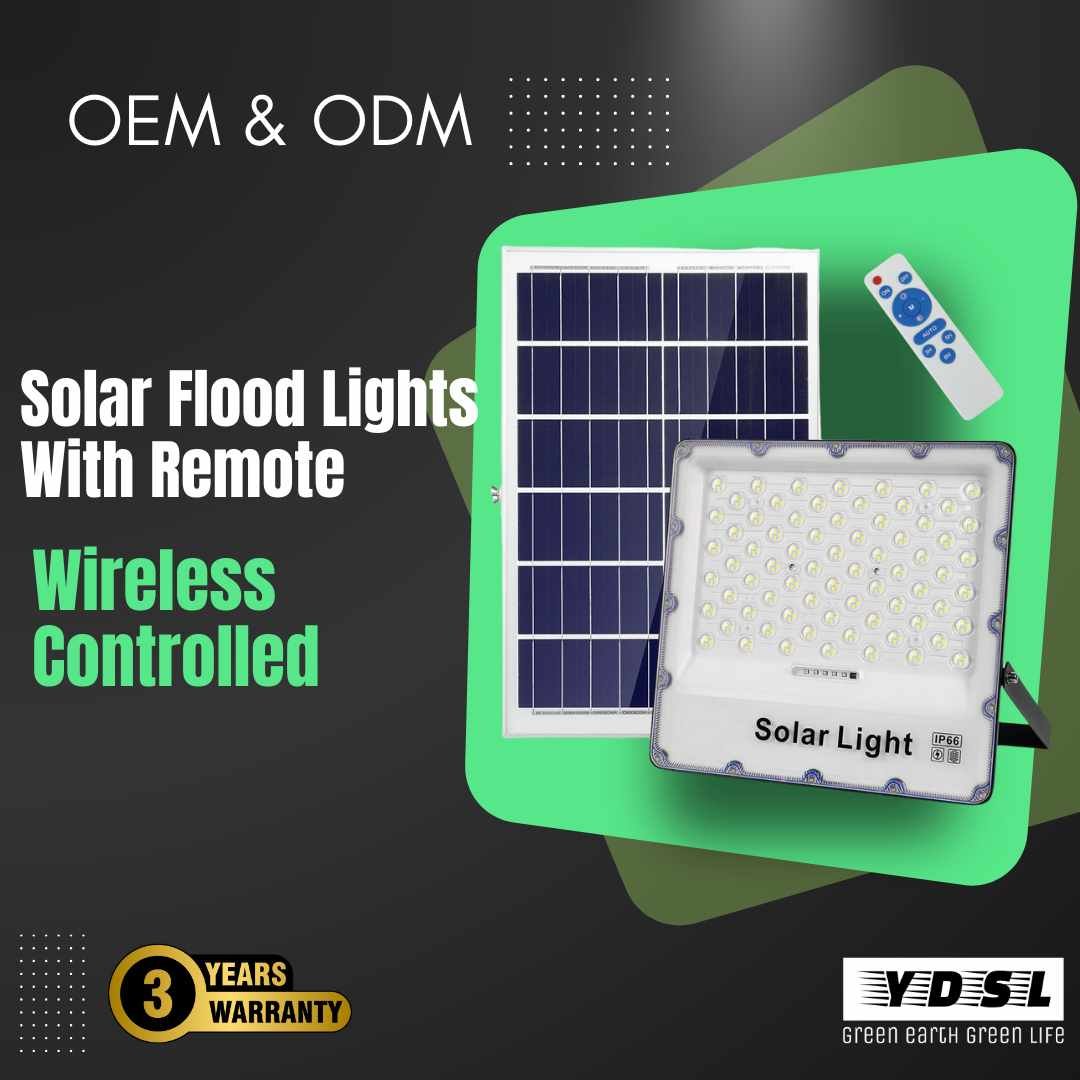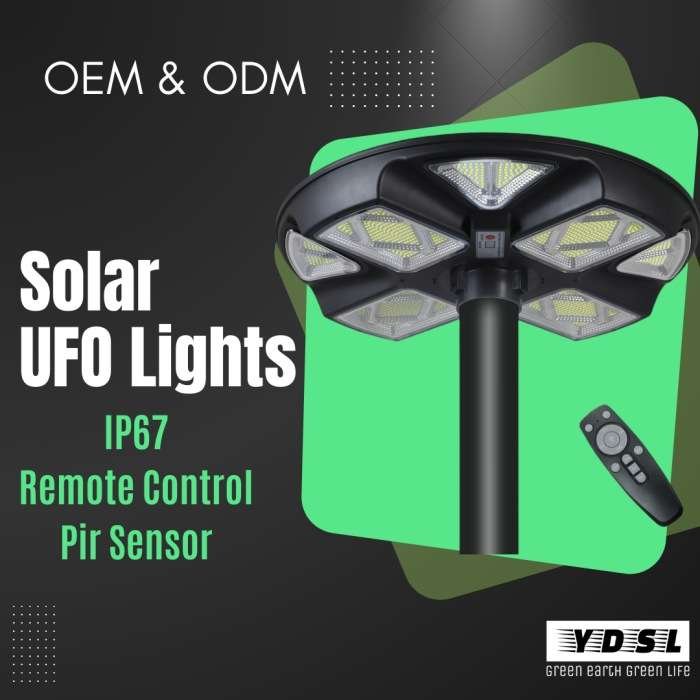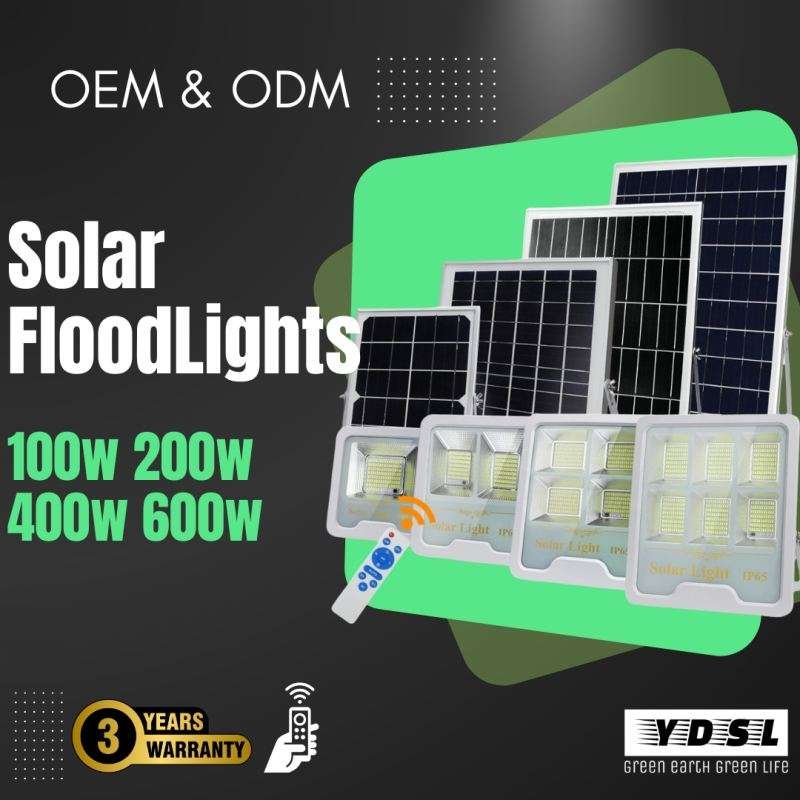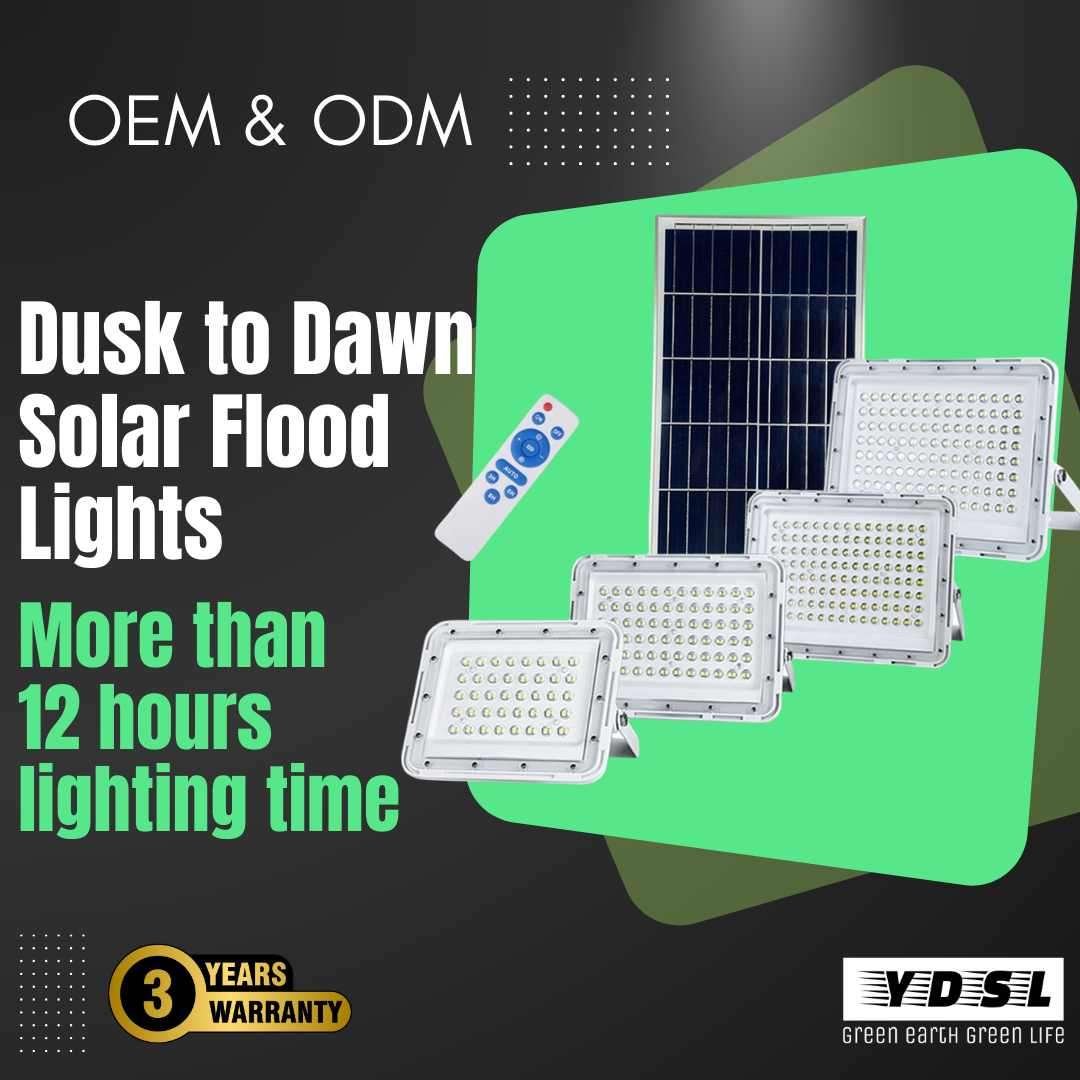The Differences: LED Lights Powered By Solar vs. LED Lights
Quick Browsing
ToggleNew lighting options are needed more than ever as the globe becomes more energy-efficient. One of the biggest improvements in this industry is LED lights powered by solar. Both types of lights are energy-efficient and environmentally friendly, but many people want to know what makes them different and which one is better for them.
This article will explain the differences between ordinary LED light bulbs and solar-powered LEDs. How they function, what they’re excellent for, and how to choose one will be discussed.
What Are LED Lights?
LED, short for Light Emitting Diode, has changed lighting due to its energy efficiency and lifespan. LEDs use chips that produce light when electricity runs through them. LED lights last longer and consume less electricity than halogen or fluorescent bulbs.
How LED Lights Work:
When given power, semiconductor diodes in LEDs give off light. An electric current moves the electrons in a semiconductor, which lets light particles called photons escape from the LED. This is called electroluminescence. LEDs are better than regular bulbs because they give off light without heat.
What Are LED Lights Powered By Solar?
Led lights powered by solar battery work great outside in gardens, on paths, in parking lots, along the street, and even in big business areas. They offer a solution that doesn’t depend on the power grid, which is great for places where getting energy is hard or expensive.
How Solar Powered Exterior Lights Work:
The solar powered LED light captures sunlight via solar panels, change it into electricity stored in lithium-ion or LiFePO4 batteries. At night, the stored energy powers the LED light, regulated by a controller to protect against overcharging or over-discharging.
Traditional LED Lights vs Solar Lights
Energy Source
- LED Lights: Rely on grid electricity.
- Solar Lights: Use solar energy, clean and eco-friendly.
Installation Cost
- LED Lights: Require cables, complex installation, and higher costs.
- LED Lights Powered by Solar: No cables needed, simple installation, higher initial investment.
Operating Cost
- LED Lights: High long-term electricity costs.
- Solar Power Lights: Almost no electricity costs, long-term savings.
Suitable Applications
- Traditional LED Lights: Ideal for areas with stable grid power.
- Solar Lights: Perfect for remote areas or places without grid access.
Environmental Impact
- Traditional LED Lights: May rely on fossil fuels, producing carbon emissions.
- Solar Lights: Zero carbon emissions, more environmentally friendly.
Smart Features
- Traditional LED Lights: Basic functionality, usually manual control.
- Solar Lights: Can integrate smart features like light sensors or motion detection.
Reliability
- LED Lights: Affected by grid fluctuations, potential power outages.
- Solar Lights: Operate independently, unaffected by grid issues.
Future Trends
- LED Lights: Gradually being replaced by more energy-efficient technologies.
- Solar Lights: Expanding applications with advancing technology.
How to Choose the Right Lighting Solution
It’s important to think about your lighting needs, income, and fitting space when choosing between LED lights and solar lights. Keep these important things in mind:
1. Location:
When you’re in a remote area or somewhere without power, solar-powered LED driveaway lights are the best choice. They don’t need to be connected to the power grid and can light up reliably with only solar energy.
When living in a city with easy access to grid power, LED lights may be a cheaper option, especially for indoor use.
2. Budget:
Solar-powered LED lights may cost more at first, but they save you a lot of money in the long run because they don’t need electricity.
Connecting LED lights to the power grid may save you money at first, but it will cost you more in the long run.
3. Durability and Maintenance:
LED lights and solar both People know that LED lights last a long time and don’t need much upkeep. But solar lights, especially those made by YDSL, have extra benefits, like being able to work in harsh settings and not getting damaged by weather.
Buying Guide
LED lights:
- Look for lights with a high energy efficiency rating (e.g., Energy Star certification).
- Check the warranty period and the availability of customer support.
- Consider the lumens (brightness) and color temperature (warm white, cool white, etc.) based on your needs.
- Choose lights that are built to last and are made of good materials.
Solar Powered Lights
- Check the battery capacity (measured in mAh or Ah) to ensure it can store enough energy for nighttime use.
- Look for high-efficiency solar panels (monocrystalline panels are generally more efficient than polycrystalline).
- Ensure the lights have a high waterproof rating (e.g., IP65 or higher) for outdoor use.
- Choose lights that are easy to install and adjust, especially if you plan to move them frequently.
- Based on how much light you need, look at the brightness and life.
- Check the expected lifespan of the battery (usually 5-10 years) and whether it’s replaceable.
Installation Guide: Traditional LED Lights vs Solar LED Lights
LED Lights
Because electrical wiring is so complicated, most people need professional help to install standard LED lights. So professional installation is suggested. Hiring a qualified electrician makes sure that the work is safe and follows the rules.
- Before you do any electrical work, turn off the power.
- Once the lights are in place, make sure they work properly by testing them.
- If the light is flashing or dimming, it could mean that there are problems with the wires.
LED Solar Lights
Installing solar LED lights is easy, so they’re great for people who live in their own homes. To set up without any problems, do these things:
- Choose a spot for the solar panel that will get the most sunlight.
- Stay out of the shade to get the best charge.
- To put the light together and connect it to the pole or hanging bracket, follow the directions that came with it.
- Put the pole down in the ground or use screws or stakes to attach it to a wall.
- Change the angle of the solar panel
- Tilt the solar panel to the best angle for absorbing sunshine (30 to 45 degrees is a good range).
- For solar lights to work, they don’t need to be wired to a power source.
- After letting the solar panel charge all day, check out the lights at night.
Conclusion
Choosing between LED lights and LED lights powered by solar relies on energy usage, installation location, price, and environmental impact. The revolutionary solar-powered lighting alternatives from YDSL blend environmental friendliness, performance, and affordability.
For energy savings and carbon reduction, wholesale solar powered lights are a good alternative. YDSL’s vast selection of solar products offers a solution for everyone, from garden lights to commercial illumination.
Visit YDSL’s website to learn more about their wholesale solar lamp and services or get the Company Profile Solar Lighting System PDF. Browse their portfolio of LED lights powered by solar batteries, the future of energy-efficient lighting.
Related Products

Green lighting for a green life.
Professional and intelligent manufacturer
- Email: info@ydsolarlight.com
- Whatsapp: +86 18912106317
- Wechat: owen17173

